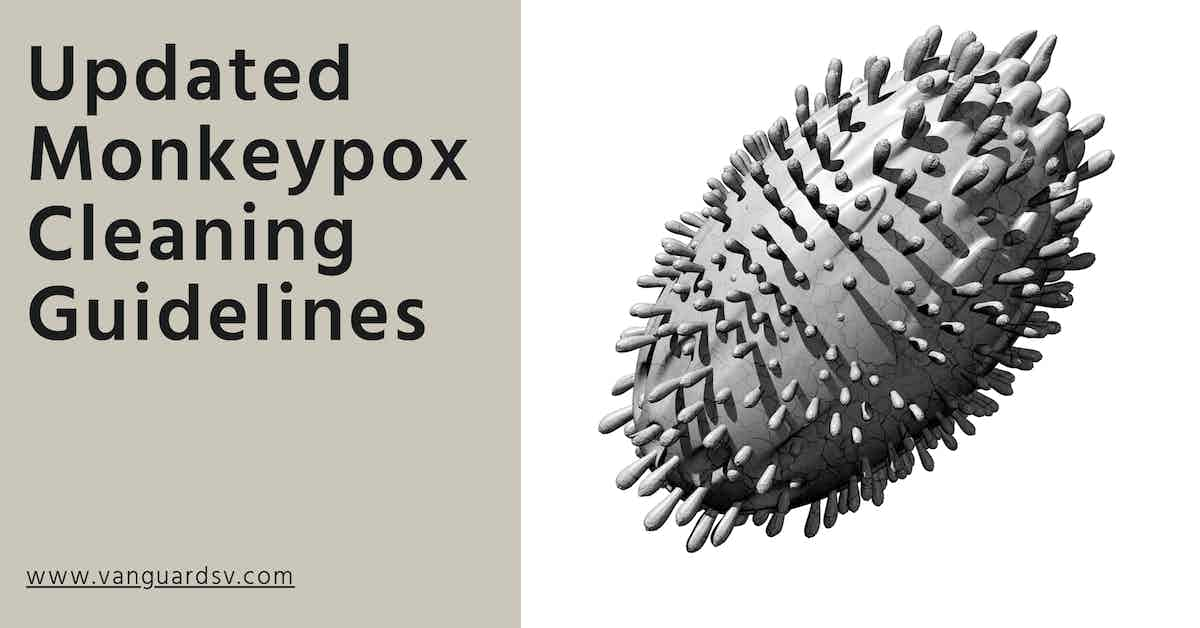The U.S. Centers for Disease Control and Prevention recently released updated guidance regarding facility cleaning and safety measures to address the emerging monkeypox outbreak.

The U.S. Department of Health and Human Services Declares Monkeypox a Public Health Emergency
On August 4th, 2022, U.S. HHS Director Xavier Becerra elevated the status of the ongoing monkeypox outbreak to a public health emergency.
The declaration comes on the heels of an increasing number of confirmed cases in the U.S., following President Biden's appointment of a National Monkeybox Response Coordinator and Deputy Coordinator.
Per the official statement released from the HHS;
U.S. Department of Health and Human Services Secretary Xavier Becerra announced today that he will declare the ongoing spread of the monkeypox virus in the United States a Public Health Emergency (PHE).
This action will further strengthen and accelerate the Biden-Harris Administration’s response in recognition of the continued rapid transmission of monkeypox in the U.S. and globally, and to signal the seriousness and urgency with which the Administration is responding.
The announcement comes on the heels of President Biden appointing Robert Fenton of the Federal Emergency Management Agency as White House National Monkeypox Response Coordinator and Dr. Demetre Daskalakis of the Centers for Disease Control and Prevention as White House National Monkeypox Response Deputy Coordinator.
Understanding Monkeypox Surface Transmission
The monkeypox virus is contagious from the initial onset of symptoms until the infected person's skin completely heals.
During that period, the infected host sheds lesion material and bodily fluids, including respiratory droplets and mucus--contaminating environmental surfaces.
Recent early studies have reported detecting live virus samples on surfaces after 15 days.
Individuals contacting these surfaces are at an increased risk of infection.
Proper hand hygiene and established enhanced cleaning methods that include targeted disinfection are currently the recommended methods for disrupting the chain of infection and halting the pathogen's spread.
Updated CDC Facility Hygiene Guidelines
Per the U.S. Environmental Protection Agency--the monkeypox virus is a Tier 1 enveloped virus, making it highly susceptible to deactivation through lipid damage by commercial-grade soap-based detergents and disinfectants listed on the EPAs List Q: Disinfectants for Emerging Viral Pathogens (EVPs).
Preventative measures should include the established daily enhanced cleaning and targeted disinfection methods proven effective during the COVID-19 outbreak, with specific caveats:
- Dry cleaning--specifically dusting, sweeping, and vacuuming--should be avoided to prevent shed lesion material residing on environmental surfaces from dislodging and potentially infecting an occupant.
- Wet cleaning--microfiber and soap and water--should be used instead.
- If the facility needs to be vacuumed, it should only be done with a commercial-grade system with a HEPA filter.
The following guidelines should be followed to clean for known or possible monkeypox contamination in non-healthcare public facilities--schools, daycares, and businesses.
- All cleaning personnel should wear appropriate PPE, including surgical gloves and a respirator with a tight seal, at a minimum.
- Pants and long-sleeved shirts or uniforms should be worn and immediately laundered after completion.
- Clean and disinfect all hard surfaces, followed by the furniture, then the carpet or flooring with soap and water, and then disinfectant.
- All waste material is considered medical waste and should be disposed of according to State regulations.
References & Resources
- CDC Updates Cleaning Guidelines for Monkeypox
- Disinfectants for Emerging Viral Pathogens (EVPs): List Q
- Considerations for Reducing Monkeypox Transmission in Congregate Living Settings
- Disinfecting Home and Other Non-Healthcare Settings
- Regulated Medical Waste Resource Locator
Takeaway
The monkeypox virus has spread far enough in the U.S. that health officials have declared a National Public Health Emergency.
Symptoms can last for some time, and the infected are considered contagious until their skin fully heals.
During that period, a wide range of transmissible material can be shed onto surfaces in public buildings, potentially contacting and infecting other occupants.
Currently, the official guidelines call for routine enhanced cleaning and targeted disinfection methods for lower-risk non-healthcare facilities.
Keeping in mind the lessons learned during the COVID-19 pandemic, it is critical that corrosive disinfectant use be targeted, necessary, and well-planned.
Often that level of planning requires expert skills and advice.
Outsourcing is a proven method for onboarding highly in-demand cleaning and disinfection services and experience for a fraction of the price of maintaining a similar service in-house.
If you would like more information regarding the effectiveness of high-performance infection prevention and control measures, or if you would like to schedule a free, no-obligation on-site assessment of your facility's custodial needs, contact us today for a free quote!
In Bakersfield, CA, call (661) 437-3253
In Fresno, CA, call (559) 206-1059
In Valencia, CA, or Santa Clarita, CA, call (661) 437-3253
In Palmdale, CA, or Lancaster, CA, call (661) 371-4756

